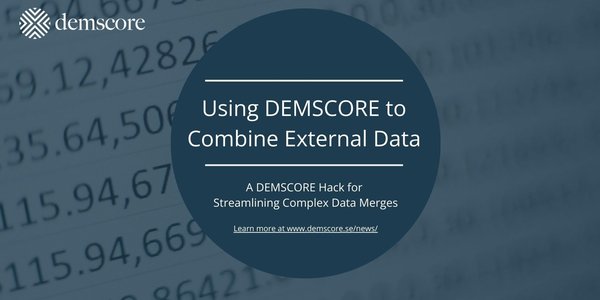With the introduction of Demscore v3, you can merge datasets in a dyadic format with datasets in a country-year format.
Let’s say you want to run an analysis using variables from the UCDP Dyadic and the V-Dem Country-Year dataset. These variables are difficult to combine, as the datasets collect data on different levels of analysis: the former on a dyad-year level, and the latter on a country-year level. See example below:
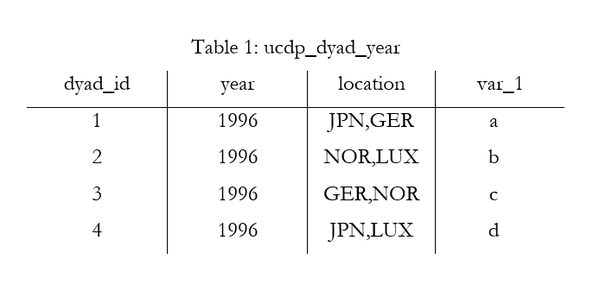
Table 1 shows an example of the UCDP dyad and year dataset. This table has three columns 'dyad_id', 'year', and 'location' with corresponding values in 4 rows.
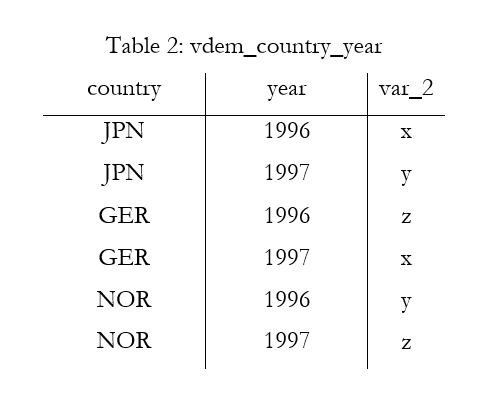
Table 2 shows an example of the V-Dem Country and Year dataset, with two columns 'country' and 'year', with corresponding values in six rows.
The Demscore v3 update represents a significant advancement, providing greater flexibility and compatibility for data analysis purposes. With the new dyad-location-year Output Format, we create an Output Unit that can append both datasets, as it includes one observation per location, dyad and year.
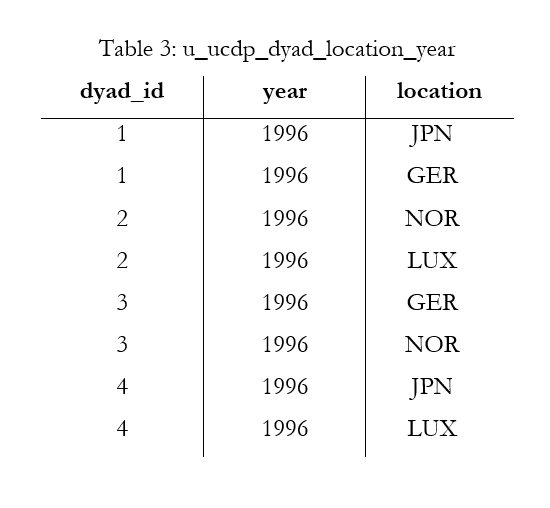
To create this unit we stretch the UCDP Dyadic dataset using the comma-separated observations in the location column, i.e. creating one row per location, dyad, and year.
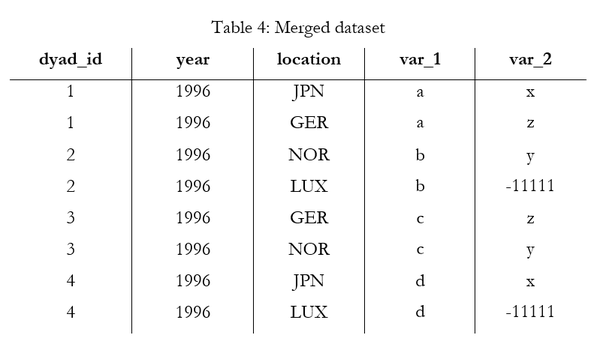
For variables coming from the V-Dem Country-Year dataset, we can now match years to years and countries to locations.
If certain observations from a variable do not have a match in the end Output Unit, they get the value -11111 (“missing from merge”).
Disclaimer: Please note that we merge V-Dem countries to UCDP locations! A country in V-Dem is a political unit enjoying at least some degree of functional and/or formal sovereignty, while a location in UCDP is either the location in which an event takes place, or the country of the incompatibility/actor.

